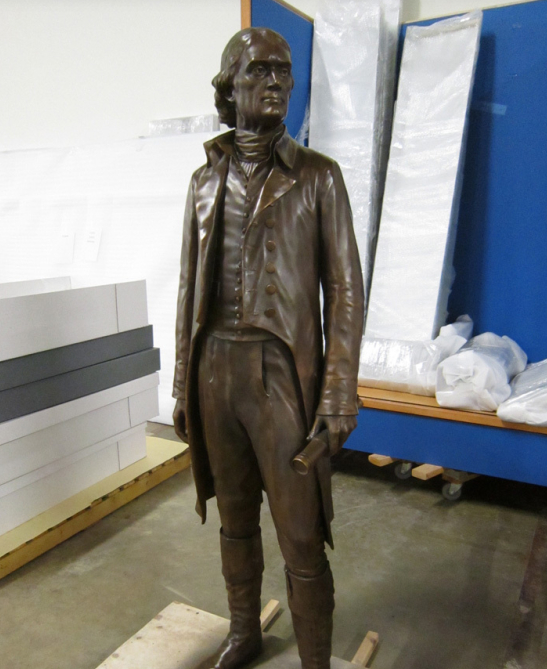Smithsonian Adopts 3D Printing

3D printed statue of Thomas Jefferson. Courtesy of RedEye on Demand/Smithsonian/Studio EIS.
Latest News
March 1, 2012
Part of what is so interesting about covering 3D printing is seeing how different people and companies use the technology. From chefs who make 3D meals to architectural experimentation, every industry that takes notice of 3D printing finds some way to incorporate the technology. A new case in point for this is the manner in which the Smithsonian has put 3D printing to work for them.
The Smithsonian Institution has been around since 1846 and consists of 19 museums and galleries, along with the National Zoological Park and a number of research facilities. For nearly as long as it has existed, the Smithsonian has been adding pieces to its collection.
Today that collection sits at around 137 million pieces. Even with 19 museums, and a number of pieces loaned out at any one time, the Smithsonian estimates that only 2% of its archives are available for public viewing at one time. Part of the problem is space, but another part is the fragile nature of some of the pieces.
To solve the problem, 3D digitization coordinators Adam Metallo and Vince Rossi have been working on a digitally scanned 3D archive. In part, the archive itself can serve as a display piece, as can be seen by visiting the Smithsonian 3D Collection. While that might be useful for looking at pieces remotely, nothing beats an up close and personal view.
Since you’re reading this on a 3D printing blog, I’ll bet you can guess the solution they settled on. Making the 3D scans of the Smithsonian pieces available to the public would allow schools (and other interested parties) with access to 3D printers to create their own reproductions of Smithsonian pieces without the worry of wear and tear.
If we could leverage the power of 3D to bring a portion of that collection to the world, that would be incredibly powerful, and definitely worth the expense.–Adam Metallo, 3D digitization coordinator at the Smithsonian
The team of Metallo and Rossi experimented with reproducing a piece for use in a new display by scanning a statue of Thomas Jefferson. The scan was sent to RedEye on Demand for printing, and the end result is on display at the “Slavery at Jefferson’s Monticello: Paradox of Liberty” exhibit at the National Museum of African American History and Culture.
Digital archives that can become solid reality may be the way of the future. As reported in the Stratasys company profile, the idea is catching on in places other than the Smithsonian.
Below you’ll find a video overview of the Smithsonian’s work with 3D printing.
Sources: CNET, Smithsonian
Subscribe to our FREE magazine, FREE email newsletters or both!
Latest News
About the Author
John NewmanJohn Newman is a Digital Engineering contributor who focuses on 3D printing. Contact him via [email protected] and read his posts on Rapid Ready Technology.
Follow DE






